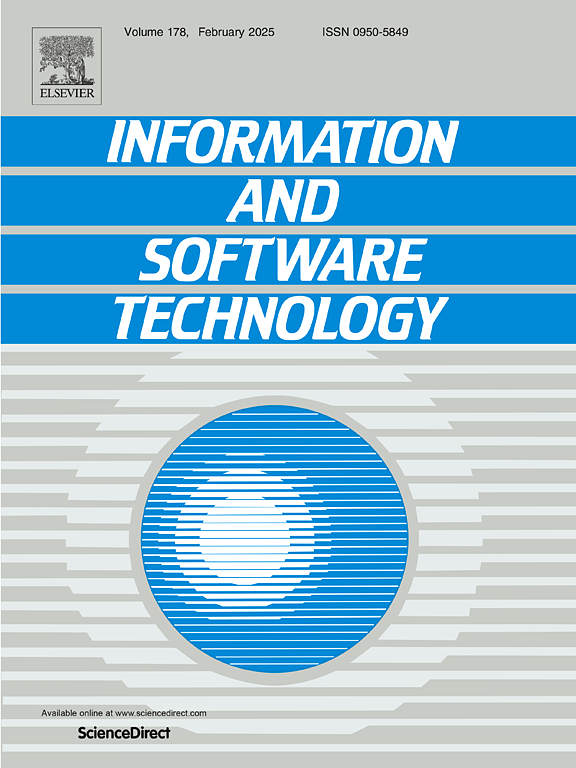Mining software repositories for software architecture — A systematic mapping study
IF 3.8
2区 计算机科学
Q2 COMPUTER SCIENCE, INFORMATION SYSTEMS
引用次数: 0
Abstract
Context:
A growing number of researchers are investigating how Mining Software Repositories (MSR) approaches can support software architecture activities, such as architecture recovery, tactics identification, architectural smell detection, and others. However, as of today, it is difficult to have a clear view of existing research on MSR for software architecture.
Objectives:
The objective of this study is to identify, classify, and summarize the state-of-the-art MSR approaches applied to software architecture (MSR4SA).
Methods:
This study is designed according to the systematic mapping study research method. Specifically, out of 2442 potentially relevant studies, we systematically identify 151 primary studies where MSR approaches are applied to perform software architecture activities. Then, we rigorously extract relevant data from each primary study and synthesize the obtained results to produce a clear map of reasons for adopting MSR approaches to support architecting activities, used data sources, applied MSR techniques, and captured architectural information.
Results:
The major reasons to adopt MSR4SA techniques are about addressing industrial concerns like achieving quality attributes and minimizing practitioners’ efforts. Most MSR4SA studies support architectural analysis, while architectural synthesis and evaluation are not commonly supported in MSR4SA studies. The most frequently mined data sources are source code repositories and issue trackers, which are also commonly mined together. Most of the MSR4SA studies apply more than one mining technique, where the most common MSR techniques are: (source code analysis, model analysis, statistical analysis), (machine learning, NLP). Architectural quality issues and components are the mostly mined type of information.
Conclusion:
Our results give a solid foundation for researchers and practitioners towards future research and applications of MSR approaches for software architecture.
求助全文
约1分钟内获得全文
求助全文
来源期刊

Information and Software Technology
工程技术-计算机:软件工程
CiteScore
9.10
自引率
7.70%
发文量
164
审稿时长
9.6 weeks
期刊介绍:
Information and Software Technology is the international archival journal focusing on research and experience that contributes to the improvement of software development practices. The journal''s scope includes methods and techniques to better engineer software and manage its development. Articles submitted for review should have a clear component of software engineering or address ways to improve the engineering and management of software development. Areas covered by the journal include:
• Software management, quality and metrics,
• Software processes,
• Software architecture, modelling, specification, design and programming
• Functional and non-functional software requirements
• Software testing and verification & validation
• Empirical studies of all aspects of engineering and managing software development
Short Communications is a new section dedicated to short papers addressing new ideas, controversial opinions, "Negative" results and much more. Read the Guide for authors for more information.
The journal encourages and welcomes submissions of systematic literature studies (reviews and maps) within the scope of the journal. Information and Software Technology is the premiere outlet for systematic literature studies in software engineering.
 求助内容:
求助内容: 应助结果提醒方式:
应助结果提醒方式:


